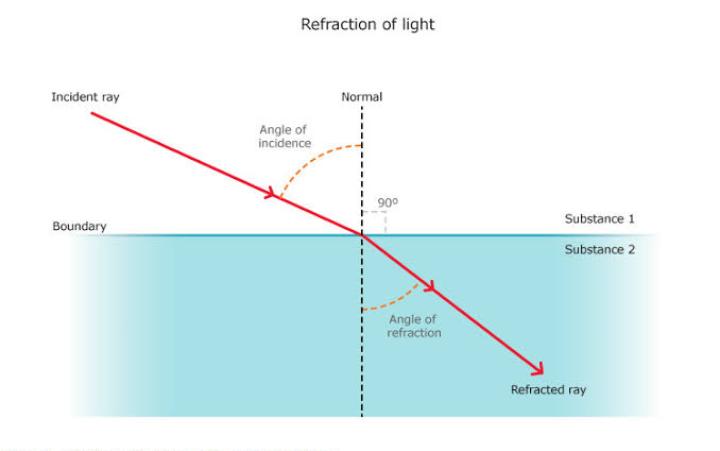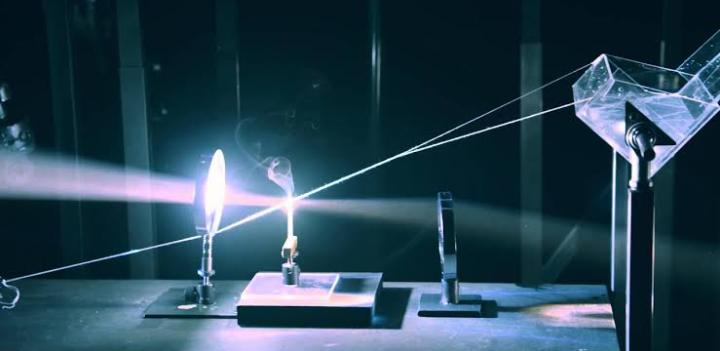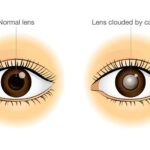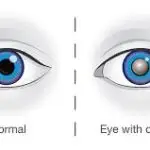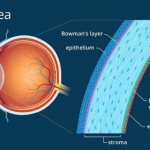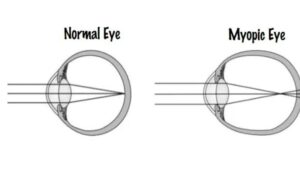We all know that as we get older, our bodies change. Our hair gets a little greyer, our joints get a little creakier, and sometimes, our vision is not what it used to be. One of the biggest reasons for that change in vision is cataracts, which are the leading cause of correctable blindness in the world.
The main reason we get cataracts is simply ageing—it’s a natural process we cant really stop.
But what about other factors? For years, scientists have been looking into how our environment affects our eyes, especially when it comes to sunlight. We’ve all heard about UV rays and our skin, but what do they do to our eyes?
In this blog we are going to study the link between UV ray exposure and cataract.
But before that lets talk about cataract.
Cataract
Cataract is a clinical condition characterized by the clouding, or opacification, of the eye's natural crystalline lens. This loss of transparency disrupts the orderly transmission and refraction of light onto the retina, leading to progressive vision impairment characterized by symptoms such as blurred vision, glare, and faded color perception . The most common form is age-related, or senile cataract, which is diagnosed in individuals over 50 years of age when there is no known history of mechanical, chemical, or other radiation-induced trauma. Now let’s know about UV rays
Ultraviolet (UV) radiation is a form of non-ionizing electromagnetic energy with wavelengths ranging from 100 to 400 nanometers (nm), making it invisible to the human eye. It is classified into three bands based on wavelength:
UV-C (100–280 nm): This band has the shortest wavelength and highest energy but is almost completely absorbed by the Earth’s stratospheric ozone layer, posing a negligible threat from natural solar exposure.
UV-B (280–315 nm): A significant portion of UV-B is also filtered by the ozone layer, but the fraction that reaches the surface is biologically potent and is a primary driver of photochemical damage to skin and eyes. Within the eye, the cornea absorbs the vast majority of incident UV- B radiation, shielding the deeper structures.
UV-A (315–400 nm): This is the most abundant form of UV radiation at the Earth's surface, constituting approximately 95% to 97% of the total UV energy that penetrates the atmosphere. UV-A has a longer wavelength and penetrates more deeply into ocular tissues than UV-B. While the cornea absorbs some UV-A, a substantial amount reaches the crystalline lens, which absorbs most of it, thereby protecting the retina.
Ocular exposure to UV radiation is a complex phenomenon influenced by numerous factors.
Exposure levels are higher at lower latitudes (closer to the equator) and at higher altitudes.
Furthermore, environmental surfaces can dramatically amplify exposure; snow can reflect up to
94% of UV rays, while water and sand are also powerful reflectors. This means that activities like
skiing, fishing, or spending time at the beach can lead to exceptionally high levels of ocular UV
exposure. [3]
How UV Radiation Induces Cataractogenesis
Oxidative Stress and Reactive Oxygen Species (ROS) Generation
The central mechanism that links UV radiation to cataract formation is such that it induces oxidative stress of that type. Photochemical reactions can start at the time when lens molecules absorb those UV photons. These reactions can generate such highly unstable damaging molecules that are for reactive oxygen species (ROS). Superoxide radicals as well as hydrogen peroxide (H2O2), coupled with hydroxyl radicals exist among those ROS which are neutralized via that lenses advanced endogenous antioxidant defense system. This system does include high concentrations of small-molecule antioxidants such as glutathione (GSH) and also ascorbic acid (vitamin C) in addition to enzymes such as superoxide dismutase (SOD) and catalase. Yet, continuing UV radiation exposure might create ROS too quickly to allow defenses to cope. This vulnerability is compounded through the natural aging process because of the concentration of key antioxidants that includes GSH in the lens nucleus; this declines greatly. Thus, oxidative stress exists as unbalanced. ROS are then able to be free for infliction of common damage upon
biomolecules that are necessary including proteins and lipids and also DNA so disrupting cellular function along with integrity.
Crystallin Protein Damage: The Pathway to Lens Opacification
The remarkable transparency of the crystalline lens is a direct result of the unique properties and highly organized arrangement of its primary structural proteins, the crystallins. These proteins are exceptionally long-lived, with those in the lens nucleus persisting for a lifetime. UV-induced oxidative stress directly targets these crystallins, triggering a cascade of damaging modifications. ROS cause oxidation, fragmentation, and the formation of covalent cross-links between crystallin molecules. This process transforms the normally soluble, orderly crystallins into large, insoluble, high molecular-weight aggregates. These aggregates disrupt the delicate, short-range order of the lens fiber cytoplasm, creating particles large enough to scatter light. It is this light scattering that is the direct physical cause of lens opacification and the visual degradation experienced by individuals with cataracts. The progressive accumulation of these damaged, aggregated proteins is a defining characteristic of age-related nuclear cataract.
Lens Epithelial Cell Apoptosis: A Critical Initiating Event
The health and transparency of the entire lens are critically dependent on a single layer of metabolically active lens epithelial cells (LECs) covering its anterior surface. These cells regulate nutrient and ion transport, synthesize antioxidants, and drive cell division and differentiation into new lens fibers. UV radiation is a powerful inducer of apoptosis, or programmed cell death, in these
essential cells. Studies comparing cataractous lenses to healthy controls have found significantly elevated rates o apoptosis in the LECs of cataract patients. The mechanism involves both direct photochemical damage to DNA and indirect damage mediated by oxidative stress. Experimental models show that UV-B exposure leads to increased expression of the tumor suppressor protein p53, a key sensor of DNA damage, and caspase-3, a primary executioner enzyme in the apoptotic pathway. This process initiates a self-amplifying cycle of damage. The initial UV insult triggers LEC apoptosis. The death of these cells compromises the lens’s primary defense and repair machinery, leading to reduced levels of antioxidants like GSH and impaired metabolic function. This weakened state lowers the threshold for damage from subsequent UV exposure, making the remaining lens structures even more vulnerable. This feedback loop helps explain the cumulative nature of UV-induced damage, where chronic, repeated exposure over a lifetime progressively overwhelms the lens’s capacity for maintenance and repair, leading inevitably to cataract formation.


